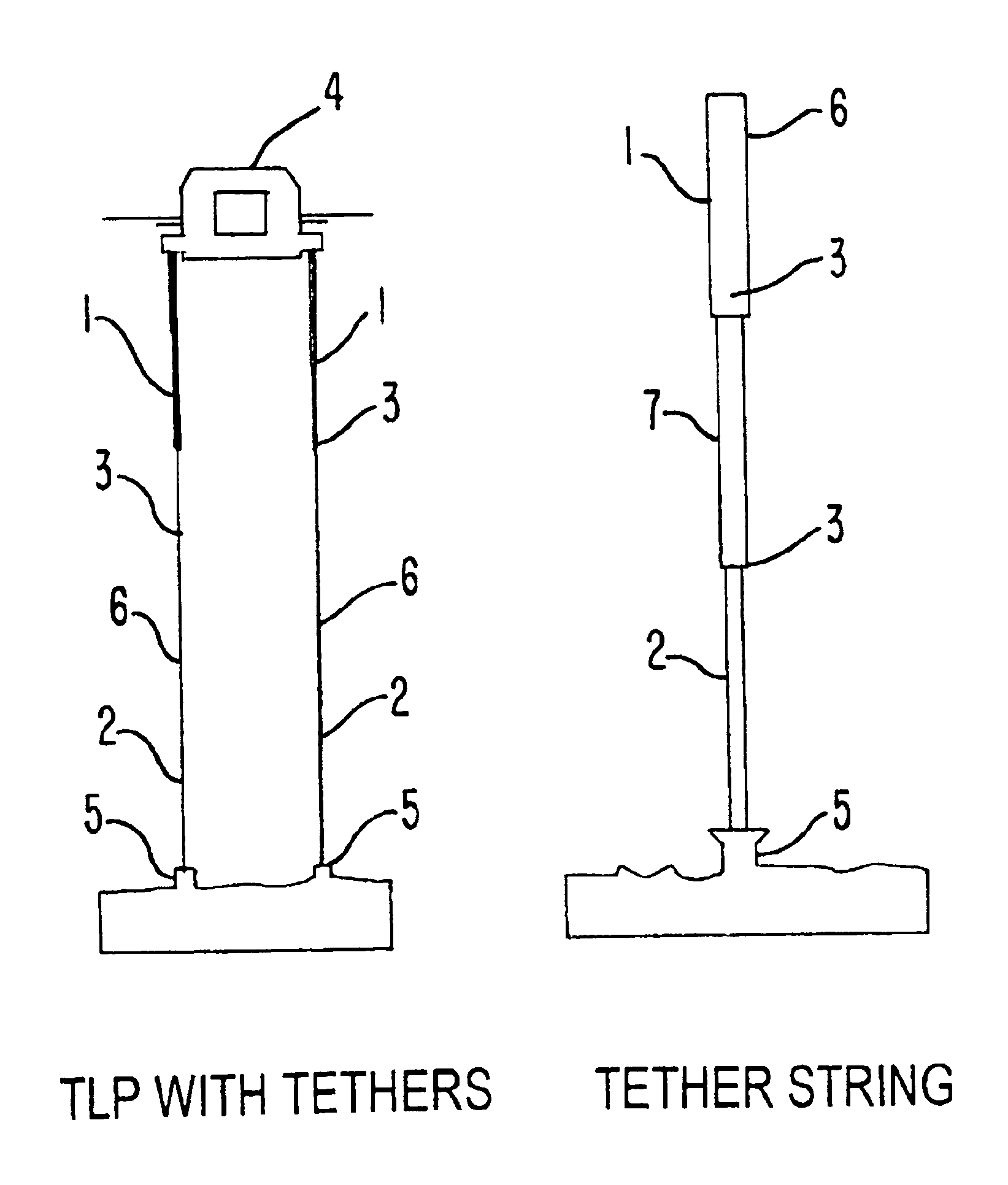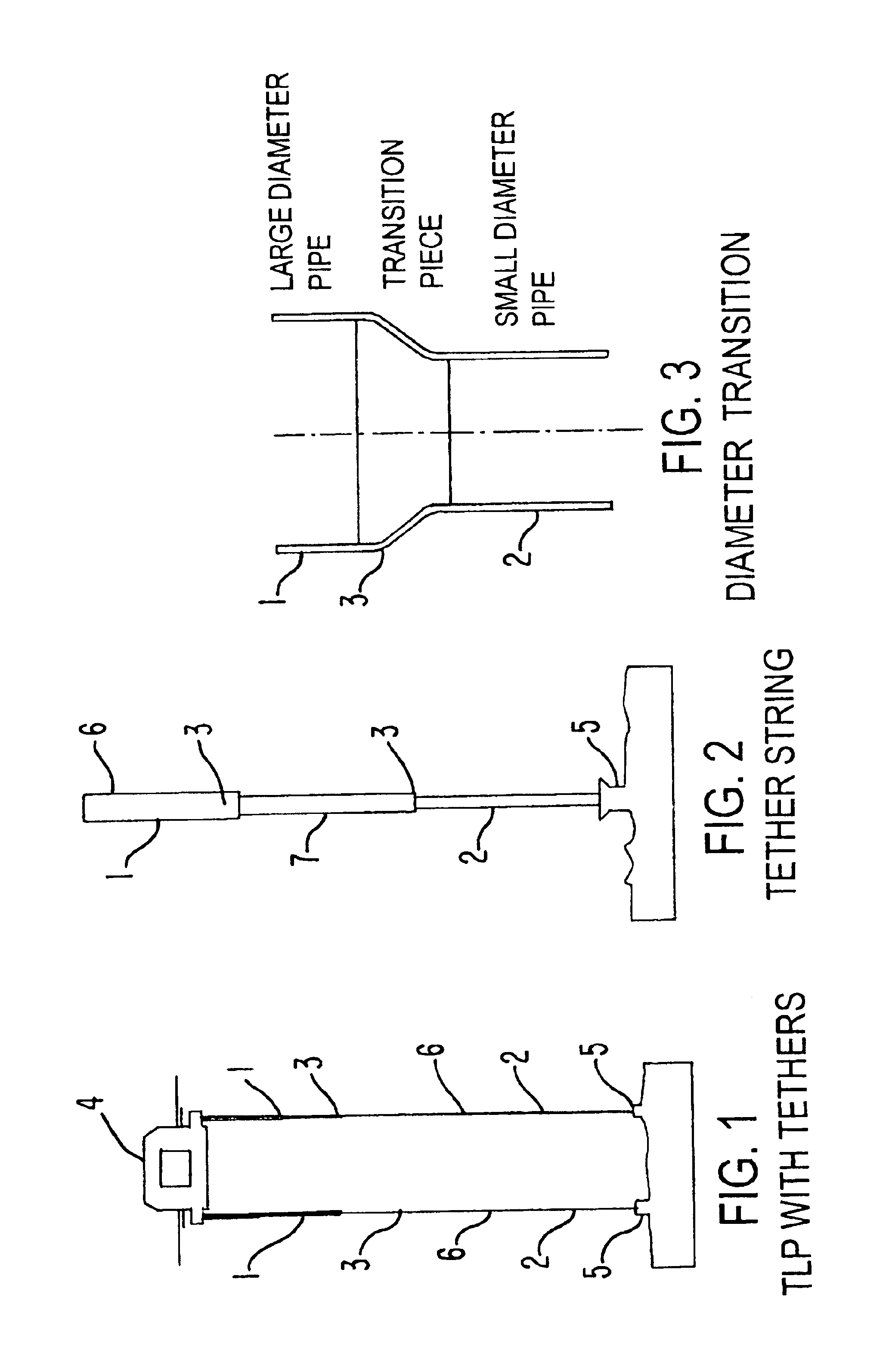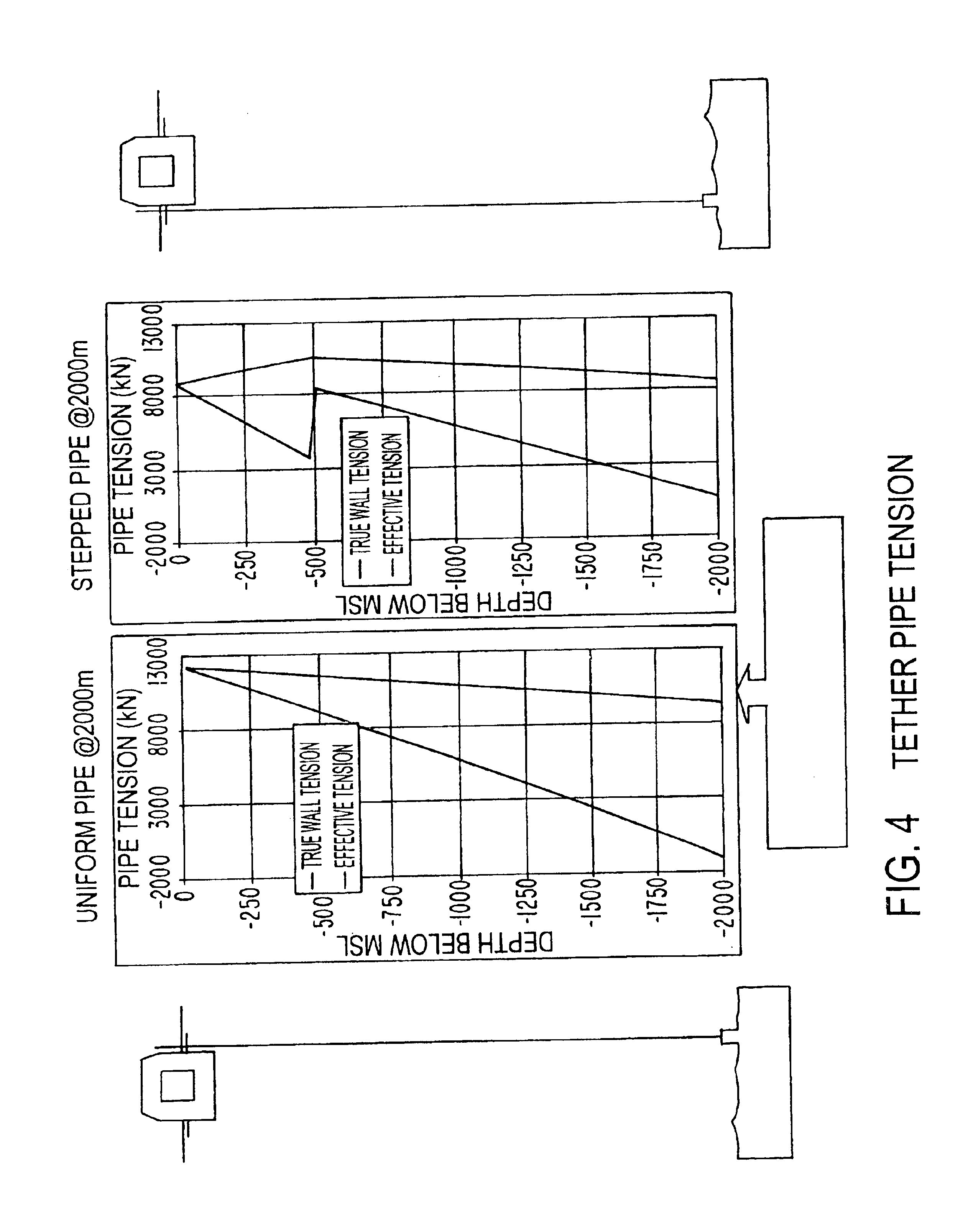Deep water TLP tether system
a technology of tether system and deep water, which is applied in the direction of waterborne vessels, vessel parts, hydraulic engineering, etc., can solve the problems of adding load to the platform, and achieve the effects of reducing the diameter, reducing the thickness of the wall, and being easy to be buoyan
- Summary
- Abstract
- Description
- Claims
- Application Information
AI Technical Summary
Benefits of technology
Problems solved by technology
Method used
Image
Examples
Embodiment Construction
The following is a description of an embodiment provided by way of the following non-limiting example.
A tension leg platform (4) with one step and two tethers (6) holding the plat-form is shown on FIG. 1. Each tether 6 includes a large-diameter upper section (1) and a small-diameter lower section (2), so that the sections have two different diameters. A transition piece (3) located between the tether sections is shown in FIG. 3 in detail. The upper section (1) of each tether (6) may have a diameter of 142 mm and a wall thickness of 24.5 mm, whereas the lower section (2) has an outer diameter of 76 mm and a wall thickness of 42 mm. The tethers are anchored to foundations (5).
A tether with two steps (three sections) is shown on FIG. 2. The figure shows three tubular sections, including an upper section (1), a lower section (2), and an intermediate section (7), interconnected with two transition pieces (3). The three tubular sections have successively reduced diameters towards the sea ...
PUM
 Login to View More
Login to View More Abstract
Description
Claims
Application Information
 Login to View More
Login to View More - R&D
- Intellectual Property
- Life Sciences
- Materials
- Tech Scout
- Unparalleled Data Quality
- Higher Quality Content
- 60% Fewer Hallucinations
Browse by: Latest US Patents, China's latest patents, Technical Efficacy Thesaurus, Application Domain, Technology Topic, Popular Technical Reports.
© 2025 PatSnap. All rights reserved.Legal|Privacy policy|Modern Slavery Act Transparency Statement|Sitemap|About US| Contact US: help@patsnap.com



